The Walled City of Jaipur, also known as the Pink City, is a magnificent example of urban planning and architecture. Built-in the early 18th century, it was India’s first planned city encompassed by towering fortified walls with seven gates. These striking gates served as entry points into the royal city and offered security.
As iconic landmarks, the gates give us a glimpse into Jaipur’s rich history, culture, and stunning architecture. Let us explore the famous gates that have stood strong around the Walled City of Jaipur for almost 300 years.
History of Gates Walled City of Jaipur
Maharaja Jai Singh II founded Jaipur in 1727 in a scientific grid pattern unique for its time. He constructed massive stone and mud walls studded with seven gates to fortify the city.
Each gate was named based on its location or as per astrological influences – Chand Pole for the Moon, Suraj Pole for the Sun, Ajmeri Gate for the Ajmer route, and so on. The gates were closed sharp at dusk by guards and opened at dawn.
Architectural Grandeur of the Gates
Built from 1727 to 1732 AD, the Jaipur city gates stand over 20 feet tall and have a remarkable height of 6 meters. The average thickness of these sturdy gates is around 3 meters.
They were built in the Rajput architectural style with ornate floral patterns, motifs, and carved parapets. The bold pink color was also carefully chosen by the Maharaja.
The striking gates served as strong, guarded entries into the Walled City of Jaipur. Even today, they highlight the royal heritage.
7 Gates of Walled City of Jaipur
Surajpole Gate
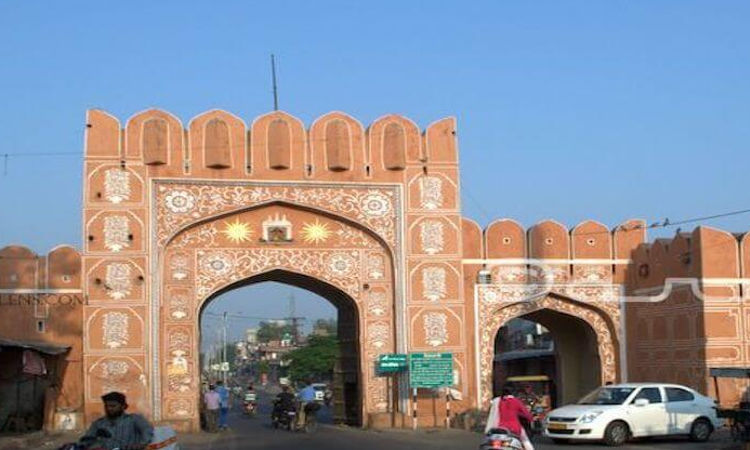
The Surajpole or Sun Gate is one of the seven gates that mark the boundary of the Walled City of Jaipur. The gate is located at the eastern end of the walled city, in the direction of the rising sun, and derives its name from Suraj or the Sun. It is also the gateway to the famous sun temple towards Galta Ji. The Surajpole can be identified by the illustration of two suns painted on its wall, and it has only one secondary gate beside it. The gate is a quintessential representation of Rajasthan’s Pink City, offering a unique and unforgettable experience for visitors seeking to explore the city’s rich architectural legacy.
Ajmeri Gate
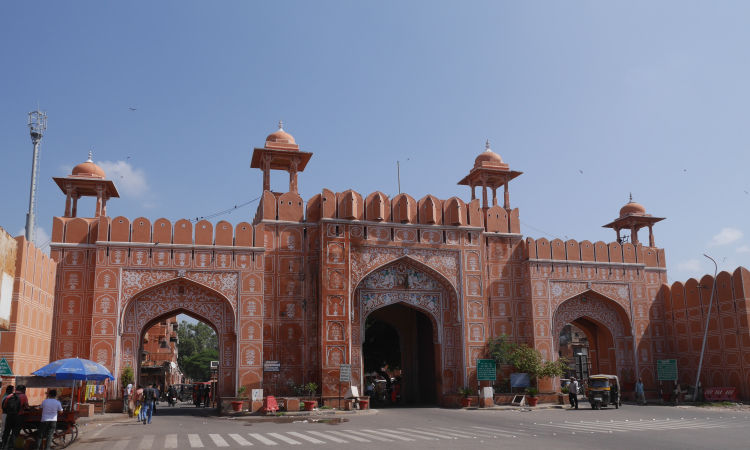
Ajmeri Gate, also known as Kishan Pole, is the first of the four southern gates that mark the boundary of the Walled City of Jaipur. The gate signifies the westerly road towards Ajmer city and leads the road inside the city towards Kishanpole Bazaar, which is especially known for tie and dye fabrics. Kishan Pole is a large-sized primary door with small secondary doors on both sides. The gate leads the way to the famous Kishanpole Bazaar, offering a range of shopping options for visitors seeking to indulge in local shopping during Diwali.
Chandpole Gate
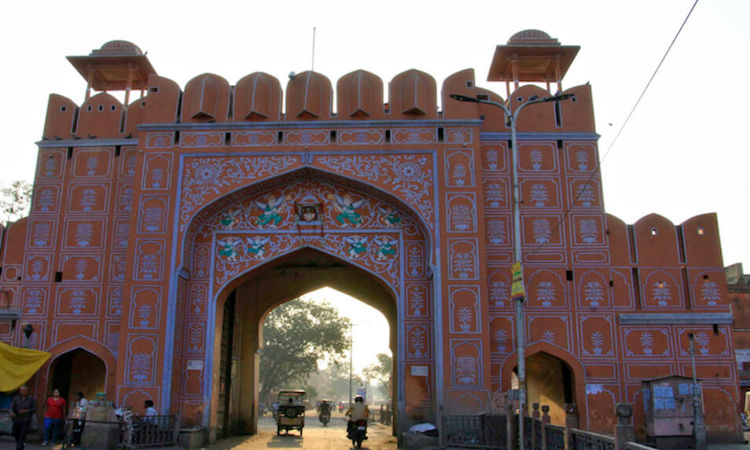
Chandpole, also known as the Moon Gate, is one of the seven gates that mark the boundary of the Walled City of Jaipur. The gate is located on the western side of the walled city, situated along the east-west axis, diagonally opposite to the Surajpole.
The Chandpole gate is a significant feature of the city, owing to the ancient Hanuman Ji temple adjoining it. The temple has a 25-foot-high Shikhar above its structure and is a popular destination for devotees seeking to offer prayers and blessings. Surrounding the Chandpole gate is the Chandpole Bazaar, a popular and busy market in Jaipur.
Sanganeri Gate
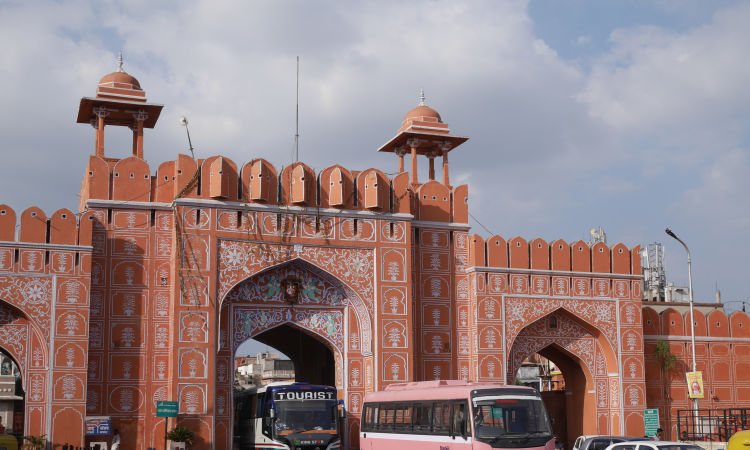
Sanganeri Gate is the third gate of the southern rampart of the Walled City of Jaipur. The gate leads to the southern route which takes you to Sanganer town which is also called Shivpole after the Shiv Mandir situated in its vicinity. The gate has a unique design and architecture, which includes a large primary door with secondary doors on either side.
The Shiv Mandir is a popular destination for devotees seeking to offer prayers and seek blessings. The royal family used to visit this temple during Mahashivratri, adding to the spiritual vibe of the gate. This gate also takes you to the very popular Johri Bazaar of Jaipur, a must-visit destination for jewellery enthusiasts.
Dhruv Pole
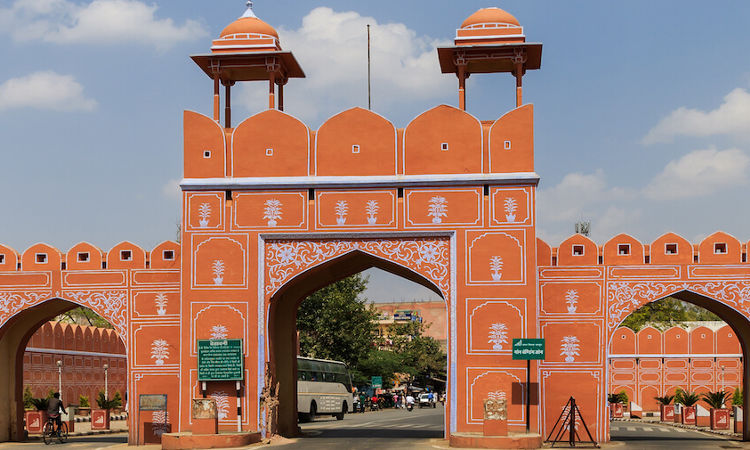
Dhruv Pole, also known as Zorawar Singh Darwaza, is the first gate that was built for the Walled City of Jaipur. The gate is named after the Dhruv Tara or Pole Star, which always shines in the north direction. The gate is situated in the north direction and is the widest among all old city gates. The secondary gates on both sides of the Dhruv Pole are also quite wide, offering a unique and unforgettable experience for visitors seeking to explore the city’s rich architectural legacy and tradition.
The Dhruv Pole gate is connected to the Amer town, and visitors have to pass through this gate while driving from Delhi to Jaipur. The gate’s construction and design were done by Maharaja Sawai Jai Singh II, who was extremely particular about ensuring maximum security for the city. The Dhruv Pole gate was initially called Dhruv Pole, but later it was renamed Zorawar Singh Darwaza.
Naya Pole
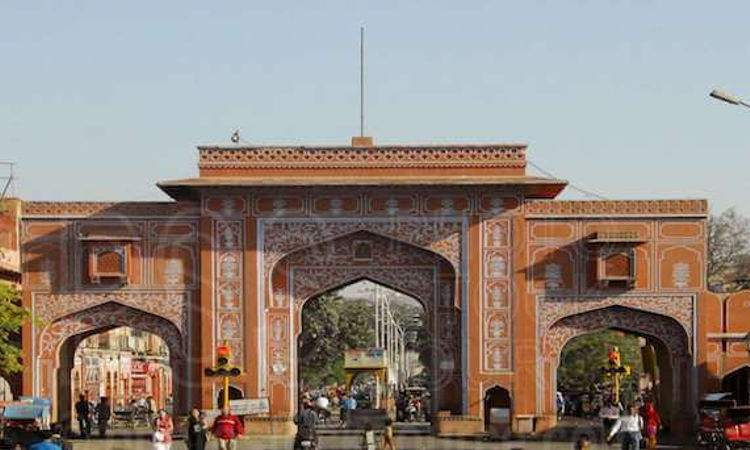
Naya Pole, also known as the New Gate, is the ninth gate that was not in the original plan of the gates constructed for the Walled City of Jaipur. The gate was constructed in the middle of the twentieth century, replacing a small gate. Earlier, it was known as the Chor Darwaza or secret gateway and was later increased in size by Sawai Ram Singh II.
The Naya Pole gate follows the design of the European and Mughal architecture blend. The road from this gate connects to the Tripolia gate of the City Palace, and visitors can spot Albert Hall through this gate. The gate lies on the southern end of the Chaura Rasta and is the second gate of the southern rampart.
Ghat Pole
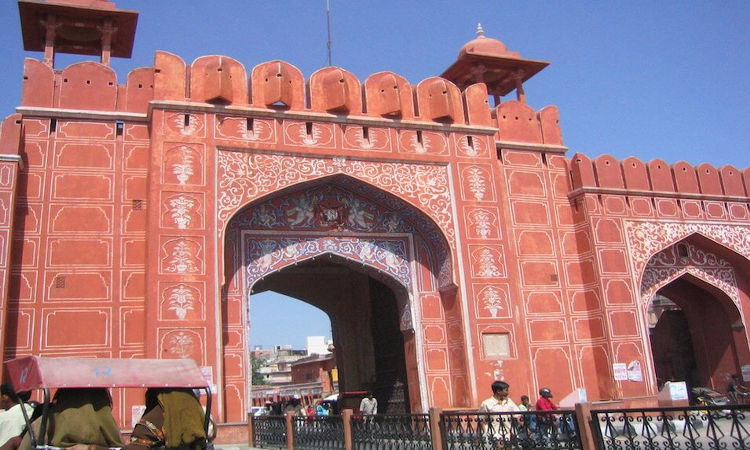
Ghat Pole, also known as Ram Pole, is the last of the four Gates of the southern rampart of the Walled City of Jaipur. The gate derived its name from the easterly road that connects Jaipur with the Ghat known as Ghat ki Ghuni. The gate paves its way towards the Ramchandra Ji Chowkri and Ramganj Bazar, offering a unique and unforgettable experience for visitors seeking to explore the city’s rich cultural heritage and tradition.
Besides these primary gates, there are many smaller gates spread across the city, like the Samrat Pole, Char Darwaza, Ganga Pole, Ganesh Pole, Tripolia, and more. Although these are internal gates, each carries a unique story to enthrall visitors. All these gates have a common design of floral motifs and colors, serving as great reminders of the rich architectural legacy of the bygone era.
Visiting the Gates of Walled City
The gates around the Walled City of Jaipur remain key landmarks even today. Visitors can explore them by:
- Going on a walking tour of the Pink City to view all gates.
- Marking them en route while visiting major attractions within the walled city.
- Seeing the Chand Pole Gate and the market around it.
- Noticing architectural details like motifs, carvings, and design.
- Observing local life buzzing around them.
- Photographing their imposing structures.
The majestic gates of Jaipur’s Walled City beautifully reflect its rich history, culture, and architecture. When visiting Jaipur, admiring these iconic landmarks offers an immersive glimpse into the city’s grand heritage.